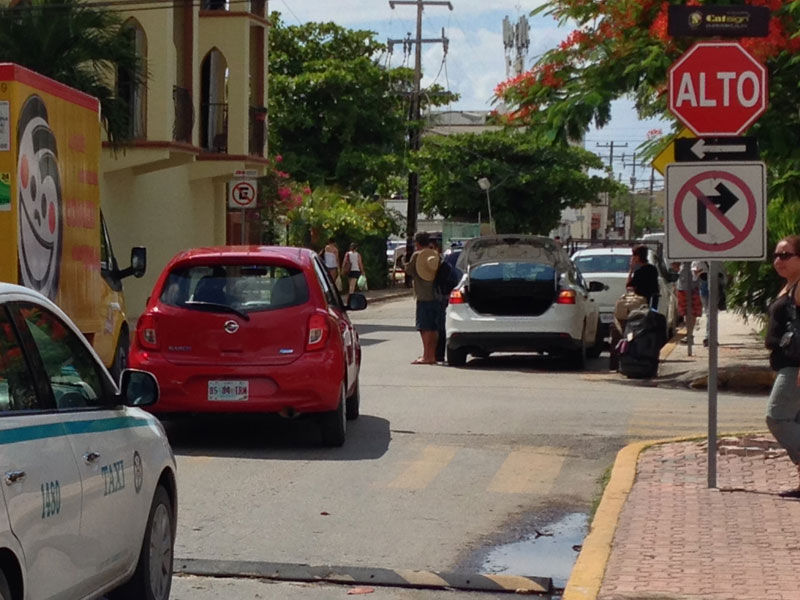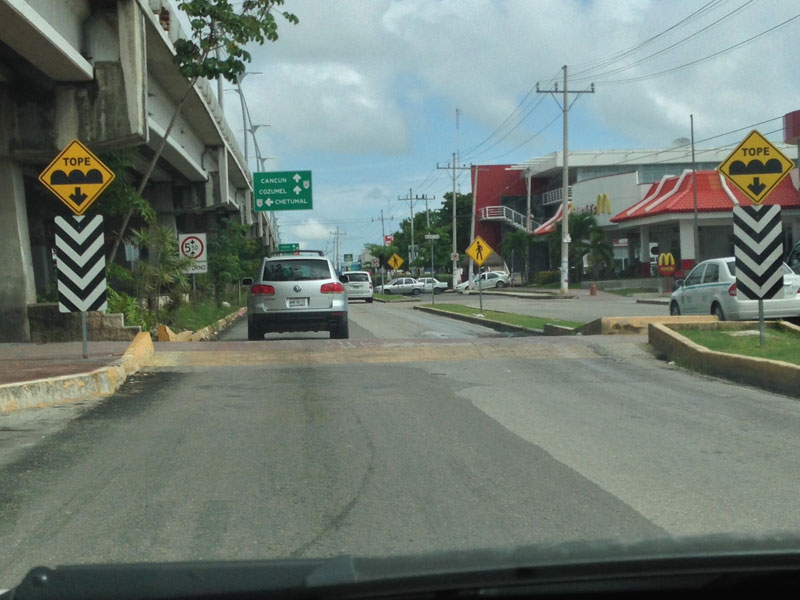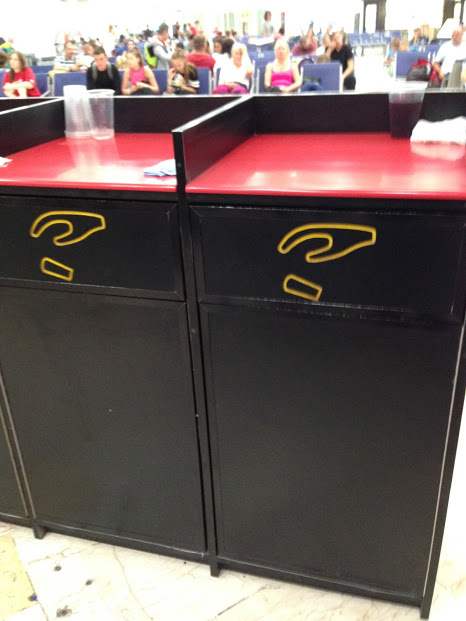A few weeks ago, I took a trip to Mexico’s Yucatan peninsula. We flew into Cancun and were driving south to Tulum. I enjoyed driving there after I learned some key rules of the road.
Stop signs aren’t
Mexican roads have what look like stop signs, the same red octagon as in the United States, with the word “Alto.”

Drivers here do not stop at these signs. We almost got rear-ended leaving the airport for stopping. While they look the same as our stop signs, the “Alto” translates more to “halt” which people seem to treat like a yield. Keep going if there are no obvious obstructions.
Topes!
Topes are speed bumps and they are all over the place. I was truly impressed how well they control traffic in three ways:
- As a highway enters the town and speed limit drops from 100 km/h to 40 km/h, there is a severe set of speed bumps that force traffic to slow down.
- Once in town, there are speed humps just large enough to allow traffic to travel at the speed limit without having to slow down much to go over them.
- They are spaced out before intersections and crosswalks, helping maintain cross traffic flow like left turns.

Go with the flow
Mexican drivers seemed much more calm, aware, and patient than many drivers in the States. The roads were chaotic with people crossing, motorbikes on the shoulders, bicycles, and dogs. Yet I didn’t see any accidents or hear angry horn honking. People just made driving work. If you’re in the left lane and someone wants to pass, get over.
One other interesting feature is at light controlled intersections, there is no bi-directional traffic. Each of the four directions get the green light in turn which means you always have a protected left.

